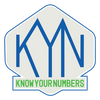Small Business Deep-Dive #2: Cooking Up a Killer Business Plan

Every family has its own set of recipes. A blue ribbon chili or a traditional German chocolate cake. Dishes that have become staples over generations.
You know what’s amazing about those recipes? When a new family member makes them, they always turn out great. We can always rely on Bushie’s kielbasa recipe. Why? Because it’s rock solid. All the ingredients have been carefully chosen, measured, and clearly written down to make something amazing.
A business plan is a lot like a recipe. It contains all the components that you will need to get your company up and running. And like a family recipe, it will be unique to your specific vision.
Tuck that napkin into your collar, and welcome to part two of KYN Accounting’s in-depth series on starting a small business! Keep reading to learn more about business plans...and why the secret’s in the sauce.
What is a business plan and why do I need one?
A lot of chefs like to improvise in the kitchen. Bakers, on the other hand, stick to the script and write down very precise notes. A business plan is a recipe for how you’ll run your business. It falls somewhere between the baking and cooking philosophies.
Your plan has the structure of baking, in that it helps you organize and set very important data points. This includes ingredients like financial projections and market analysis.
But it also has the improvisational spirit of cooking, in that you have choices for ingredients. Meaning you get to choose what elements you’ll include and how you’ll outline it.
Once you have your “recipe” written, it’s time to get to work. You’ll follow your business plan to turn up the heat and get your business cooking. Then you’ll continue to use it as you navigate your way forward.
Your business plan is also a bit like a very fancy menu for lenders. Lenders want proof that they are being served a five-star meal by a world-class chef. So what does that boil down to? A certain amount of detail defined by your business plan model.
Robust and traditional or lean and scrappy?
Some recipes are very thorough, while other recipes rely less on precision and more on feeling, i.e. “season to taste.”
Choosing a model for your business plan is similar. You have two options: traditional or a lean startup model. Your choice will depend on what kind of business you're starting and whether or not you’ll need funding.
A traditional business plan is the most commonly used model. Like an excellent soup, it takes more work on the front end but pays off with depth of flavor or information. Traditional business plans adhere to a standard structure and can be anywhere from 15-20 pages long.
A traditional business plan pairs well with an entrepreneur seeking funds because it provides the high level of information a bank or investor is looking for.
A lean startup model is better suited for whipping up something fast. This type of business plan is great if your idea is relatively simple, or if you need a plan quickly that conveys the most essential components of your business. Lean startups tend to be short (sometimes just a page) and don’t require the same amount of detail as their traditional counterparts.
What are the ingredients of a successful business plan?
Every good cook knows how to tweak a recipe. Drawing up your business plan means tailoring the basic model to your tastes and needs.
There are no hard and fast rules when it comes to the actual elements of your business plan. That being said, there are some common structures. Use the elements that make the most sense to you and adjust accordingly.
Traditional business plans typically have a pretty standard outline and contain certain key ingredients:
- Executive Summary
- Company Description
- Market Analysis
- Business Structure
- Service or Product Description
- Marketing and Sales Strategies
- Funding Requests
- Financial Projections
- Appendix for supporting materials
Lean startups have a slightly different set of ingredients. That’s because these businesses tend to operate differently. Therefore they call for different types of data points:
- Partnerships like suppliers or manufacturers
- Key activities/ “competitive edge”
- Resources like staff or intellectual property
- Value proposition
- Customer relationships and interaction
- Customer segments
- Channels to reach customers
- Cost structure
- Revenue sources
Can I tweak my business plan after the fact?
Sometimes you may put a steaming dish of green bean casserole on the table, and realize after a bite that it needs more salt. Same with a business plan. Things will undoubtedly shift and change as you put your course of action in motion.
Don’t worry! Remember that your business plan is going to evolve as your business develops. You will certainly learn a lot in that first year. Carve out time to review and revise and eliminate the ingredients that just aren’t working.
Need a little help in the kitchen?
The point of a recipe is that it's a clear, organized path to something delicious. But just because you can follow one, doesn’t mean you know how to write one. Beware: if the instructions are unclear, the outcome is never going to taste good.
Whether you’re an amateur chef or you have the local Chinese spot on speed-dial, we can all use a skilled accountant. Reach out to KYN today for help with the financial side of your tasty business plan.
The holidays are coming up...do you have a favorite family recipe you want to share with us? Comment below! (We enjoy awesome food.)
And stay tuned for next week’s Part 3: Getting Funding for your Small Business.


Leave a comment